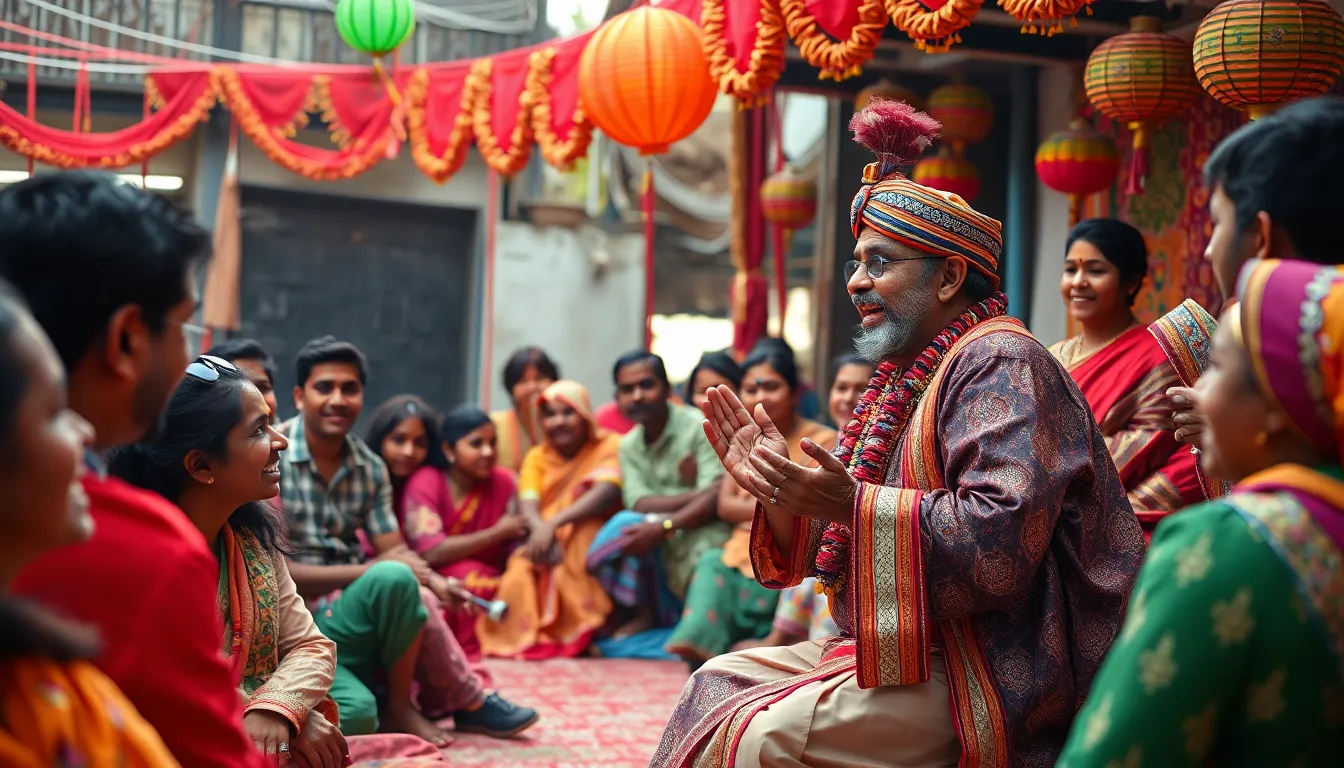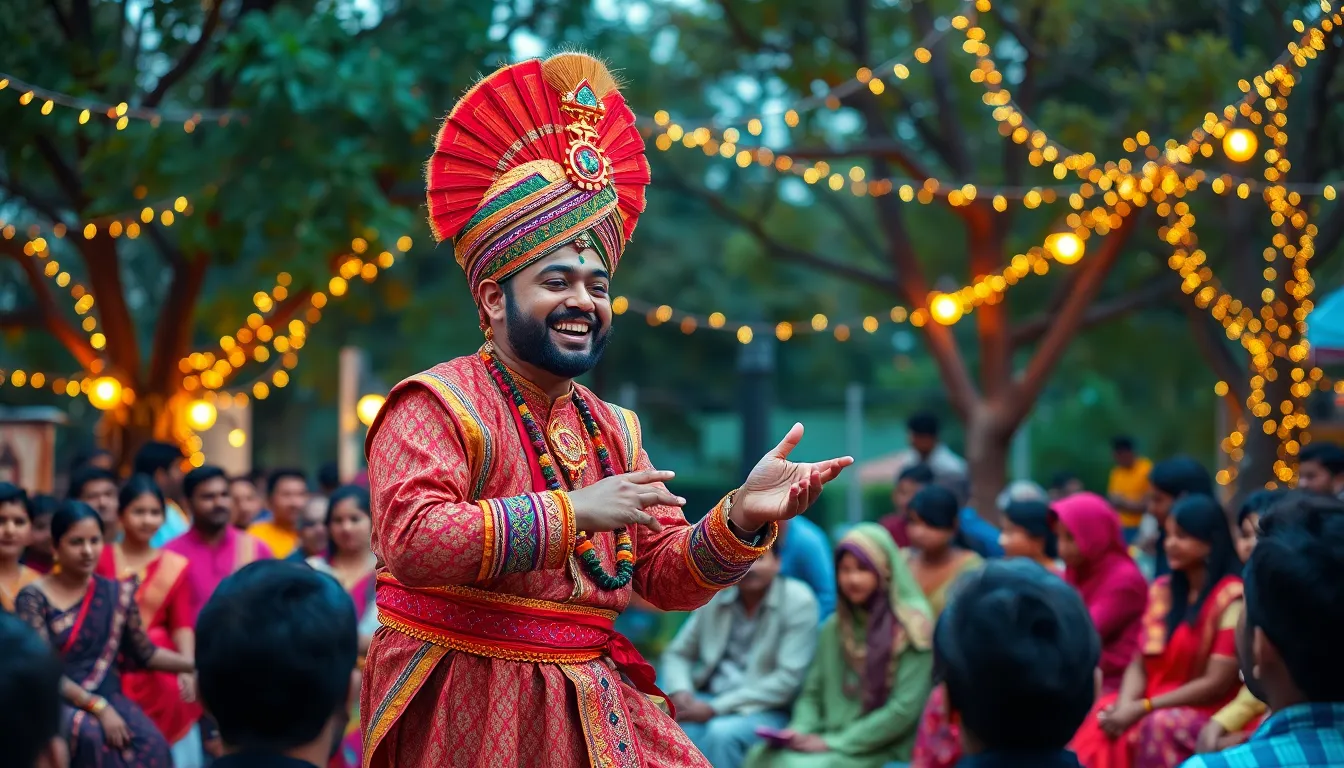In the vibrant tapestry of Indian culture, few things spark curiosity quite like jharaahar. This unique concept intertwines tradition with a splash of humor, making it both fascinating and entertaining. Whether you’re a seasoned enthusiast or just hearing about it for the first time, jharaahar promises to tickle your brain cells and maybe even your funny bone.
Table of Contents
ToggleOverview of Jharaahar
Jharaahar represents a distinct cultural element within India, merging traditional practices with a sense of humor. This unique art form often involves storytelling that evokes laughter while imparting wisdom. Humor creates an inviting atmosphere, allowing audiences to engage deeply with the narratives presented.
Performers typically utilize exaggerated gestures and expressive language to enhance their storytelling. The lively delivery captivates listeners, drawing them into the tales. Themes often center on everyday experiences, showcasing relatable characters and situations. Cultural references embedded in these stories create a strong connection to Indian heritage.
Various regions of India contribute to the richness of jharaahar. For example, folk traditions from states like Rajasthan and Gujarat offer unique perspectives and styles. Diverse dialects and local anecdotes enrich the storytelling experience, ensuring each performance remains fresh and relevant. Participants frequently adapt tales to reflect contemporary issues, keeping the art form alive and dynamic.
Jharaahar serves not only as entertainment but also as a means of social commentary. It encourages audiences to reflect on societal norms and encourages dialogue around important subjects. Engaging in this form of storytelling fosters a shared community experience while celebrating cultural diversity.
Performers often perceive jharaahar as a way to preserve cultural identity. They invest time in mastering the craft, ensuring knowledge is passed down through generations. This dedication reinforces the importance of creativity and humor in everyday life, making jharaahar an integral part of Indian cultural fabric.
Historical Context

Jharaahar, a central aspect of Indian culture, evolved through the interplay of tradition and humor. It encapsulates a vibrant storytelling style that has roots in various regional practices.
Origin and Development
Originating from ancient storytelling traditions, jharaahar developed through local customs across India. Its emergence can be traced back to rural communities where oral traditions thrived. Performers began incorporating humor to engage audiences, enriching narratives with local dialects and anecdotes. Over time, this art form transitioned from informal gatherings to organized performances, thus gaining wider recognition. As jharaahar matured, it adapted to reflect changing cultural dynamics, yet its core elements remained intact.
Cultural Significance
Culturally, jharaahar plays an essential role in preserving local identities and promoting social interaction. Through humor, it addresses societal issues while fostering community engagement. Performers serve not only as entertainers but also as social commentators, encouraging audiences to reflect on their surroundings. Events centered around jharaahar often become communal celebrations, allowing people to connect with shared histories. This art form reinforces the importance of laughter and storytelling, cementing its place within India’s cultural heritage.
Features of Jharaahar
Jharaahar features a vibrant blend of storytelling and humor, characterized by its engaging and dynamic presentation.
Visual Elements
Performers employ colorful costumes and expressive gestures that captivate the audience. Puppet shows and props accentuate the narratives, adding a visual flair to each performance. The use of local dialects often complements these visual aspects, making the storytelling even more relatable. High energy levels and dynamic movements create an immersive experience, encouraging viewers to connect with the themes being portrayed.
Functionality
Jharaahar serves multiple purposes, acting as both entertainment and social commentary. It fosters community engagement by addressing societal issues in a humorous light. This art form invites audience participation, prompting reflections on cultural norms. Through laughter and storytelling, performers initiate dialogues, encouraging audiences to think critically. Furthermore, it preserves cultural identity by passing down stories and traditions, ensuring future generations appreciate their heritage.
Performance Analysis
Jharaahar showcases strengths and weaknesses that define its unique performance dynamics.
Strengths
Cultural resonance defines the appeal of jharaahar. Its ability to engage diverse audiences lies in the relatable themes that often reflect everyday life. Performers utilize humor to bridge gaps between different social groups, fostering community interaction. Dynamic presentations feature colorful costumes and expressive gestures, enhancing audience immersion. The blend of storytelling and visual elements captivates spectators, leaving a lasting impression. Additionally, performers often invite audience participation, building a connection that encourages reflection on cultural values.
Weaknesses
Limited exposure presents a challenge for jharaahar. Many potential audiences may lack familiarity with this art form, impacting its reach. The reliance on regional dialects can hinder understanding for non-local spectators, reducing accessibility. Some performers may struggle with resources, affecting the quality of their presentations. A focus on traditional themes might limit creative exploration, potentially alienating younger audiences seeking modern relevance. Finally, shifting cultural interests may pose threats to the continuity of jharaahar, necessitating adaptation without losing its essence.
Jharaahar stands as a vibrant testament to India’s rich cultural tapestry. This unique blend of humor and tradition not only entertains but also fosters community engagement and reflection on societal norms. Through its dynamic performances and relatable storytelling, jharaahar captivates audiences while preserving local identities.
As this art form continues to evolve, it faces challenges that require adaptation to maintain relevance among younger generations. Embracing innovation while honoring its roots will ensure that jharaahar remains a cherished part of India’s cultural heritage. Ultimately, its ability to evoke laughter and provoke thought highlights the enduring power of storytelling in shaping community connections and cultural identity.


